#Uintah and Ouray Indian Reservation
Explore tagged Tumblr posts
Text
Tribes welcome return of ancestral lands
Tuesday, February 14, 2023 By Kevin Abourezk, Indianz.Com Kimberly Morales Johnson can’t help but imagine the land that today is Los Angeles as her ancestors would have seen it centuries ago. The Tongva people used the canyons of the San Gabriel Mountains as trading routes with the indigenous people of the Mojave desert. Last year, the Tongva reclaimed land in Los Angeles for the first time in almost 200 years after being forced to give up their lands and having their federal status terminated by President Dwight D. Eisenhower in 1950.
Sharon Alexander, a non-Native woman, donated a one-acre property in Altadena, California, to the Tongva after learning about the #LandBack movement during the 2016 Democratic National Convention and discovering that the Tongva were the original inhabitants of Los Angeles.
Johnson, vice president of the Tongva Taraxat Paxaavxa Conservancy, a nonprofit set up by the community to receive the land, said the tribe has big plans for the property. “It needs a lot of work, but we’re all dedicated to it,” she said.
In 2022, thousands of acres of private and public land in America were returned to the care of Native peoples. Many of these lands were returned to their original inhabitants, including the one-acre property in Los Angeles.
A website called the Decolonial Atlas created a “Land Back” map charting the locations of land returns that occurred last year. Other land returns that occurred last year include 40 acres around the Wounded Knee National Historic Landmark, the site of the 1890 Wounded Knee Massacre. The Oglala Sioux Tribe and the Cheyenne River Sioux Tribe bought the land for $500,000.
“It’s a small step towards healing and really making sure that we as a tribe are protecting our critical areas and assets,” Oglala Sioux Tribe President Kevin Killer told The Associated Press.
Although not a land return, the Biden administration last year signed an agreement giving five tribes – the Hopi, Navajo, Ute Mountain Ute, Ute Indian Tribe of the Uintah and Ouray Reservation, and Pueblo of Zuni – greater oversight of the 1.3-million acre Bears Ears National Monument in Utah.
Last year, the Rappahannock Tribe celebrated the return of more than 400 acres along the Rappahannock River that is home to a historic tribal village named Pissacoack and a four-mile stretch of white-colored cliffs.
“Your ancestors cherished these lands for many generations and despite centuries of land disputes and shifting policies, your connections to these cliffs and to this river remain unbroken,” Secretary of the Interior Deb Haaland said at an event celebrating the land return. One of the largest land returns last year involved the purchase of more than 28,000 acres by the Bois Forte Band of Chippewa Tribe in Minnesota.
The Conservation Fund, an environmental nonprofit, sold the land to the tribe after purchasing the land from a lumber manufacturer in 2020. Emilee Nelson, Minnesota associate state director of The Conservation Fund, said her organization bought the land from the PotlatchDeltic Corporation after the company decided to divest of much of its Minnesota land holdings. The Conservation Fund bought 72,000 acres from the company, including 28,000 acres that were within the Bois Forte Reservation. The Boise Fort Band lost the land following passage of the Dawes Act of 1887, which led to the allotment of the land to private landowners. “Where this land was located made a lot of sense for the tribe to own it,” Nelson said.
However, he said, tribes don’t always want to purchase land or even accept a land donation, especially if they don’t think they’ll be able to put it into federal trust status. He offered advice to those considering donating their land to a tribe. “If you want to make a donation, sell the land and make a donation,” he said.
As for the one-acre land donation to the Tongva, Kimberly Morales Johnson said the tribe plans to use the land to create a community center where it will be able to host cultural workshops and where Tongva people will be able to gather plants sacred to their people, including the acorns from the oak trees on the property.
“This is about self-determination and sovereignty,” she said. The tribe is also allowing a tribal artist to live on the land and take care of it, she said. The Tongva have also begun working to return Native plants to the property and remove invasive species.
“This whole LandBack movement is rooted in healing, and instead of looking at land as a commodity, we’re looking at it as a way to have a relationship with the land and with each other and bringing back our traditions, our language, our food, our culture,” she said.
208 notes
·
View notes
Text
“On February 22, 1876, Thaté Iyóhiwiŋ, a Yankton Dakota woman living on the Yankton Indiana Reservation in South Dakota, and her European American mate, Felker Simmons, brought their daughter, Zitkála-Šá, into the world. Simmons would abandon mother and child, yet Zitkála-Šá describes the first 8 years of her life on the reservation as happy and safe. All that changed in 1884 when missionaries came to “save” the children.
Even though White's Indiana Manual Labor Institute was a Quaker project, it still forced the children who attended to adapt to the Quaker way of doing things, including taking new names. Zitkála-Šá was renamed Gertrude Simmons. In her biographies, Zitkála-Šá describes deep conflict between her native identity and the dominant white culture, the sorrow of being separated from her mother, and her joy in learning to read, write, and play the violin.
Zitkála-Šá returned to the reservation in 1887, but after 3 years she decided she wanted to further her education and returned to the Institute again. She taught music while attending school from 1891 to 1895, when she earned her first diploma. Her speech at graduation tackled the issue of women’s inequality and was praised in local newspapers. She had a gift of public speaking and music, and put both to good use during her life.
In 1895 Zitkála-Šá earned a scholarship to attend Earlham College in Richmond, Indiana. While in college she gave public speeches and even translated Native American legends into Latin and English for children. In 1887, mere weeks from graduation, her health took a turn for the worse; her scholarship did not cover all expenses, so she had to drop out.
After college Zitkála-Šá used her musical talents to make a living. From 1897-1899, she played violin with the New England Conservatory of Music in Boston. She then took a job teaching music at the Carlisle Indian Industrial School in Pennsylvania, where she also hosted debates on the issue of Native American treatment. The school used her to recruit students and impress the world, but her speaking out against their rigid indoctrination of native children into white culture resulted in her dismissal in 1901.
Concerned about her mother’s health, Zitkála-Šá returned to the reservation. While there she began to collect the stories of her people and translate them into English. She found a publisher in Ginn and Company, and they put out her collection of these stories as Old Indian Legends in 1901. Like most authors, she took another job at the Bureau of Indian Affairs as her principal support. It was at this job in 1902 that she met and married Captain Raymond Bonnin, a mixed-race Nakota man.
The couple moved to work on the Uintah-Ouray Reservation in Utah for the next 14 years. They had one son, named Ohiya. Zitkála-Šá met and began to collaborate with William F. Hanson, a composer at Brigham Young University. Together they created The Sun Dance, the first opera co-written by a Native American. The opera used the backdrop of the Ute Sun Dance to explore Ute and Yankton Dakota cultures. It premiered in 1913 and was originally performed by Ute actors and singers. Choosing such a topic for the opera would have been a way to strike back at forced enculturation, because the ritual itself had been outlawed by the Federal Government in 1883 and remained so until 1933. Much later, in 1938, The Sun Dance came to The Broadway Theatre in New York City.
From 1902-1916, Zitkála-Šá published several articles about her life and native legends for English readers. Her works appeared in Atlantic Monthly and Harper’s Monthly, magazines with primarily a white readership. Her essays also appeared in American Indian Magazine. While these pieces were often autobiographical, they were still political and social commentary that showed her increased frustration with the Bureau of Indian Affairs, which fired the couple in 1916.
In 1916, the couple moved to Washington D.C., where Zitkála-Šá served as the secretary of the Society of the American Indian. In 1926, she founded the National Council of American Indians, an organization that worked to improve the treatment and lives of Native Americans. By 1928, she was an advisor to the Meriam Commission, which would lead to several improvements in how the Federal Government treated native peoples.
Zitkála-Šá continued writing, and her books and essays became more political in such works as American Indian Stories (1921) and “Oklahoma’s Poor Rich Indians,” published in 1923 by the Indian Rights Association. She spoke out for Indian’s rights and women’s rights up until her death in 1938 at the age of 61"
📷: Gertrude Kasebier's photos of Zitkala-Ša, AKA Red Bird, from BUFFALO BILL'S WILD WEST WARRIORS. You can read about her in the book INDIGENOUS INTELLECTUALS by Kiara M. Vigil.

2 notes
·
View notes
Text
[ad_1] It is December, and in case you are now not in a position for the vacations but, Utah's nationwide parks certain are.As parks transition to wintry weather, hours of operations are converting, as are the introduced facilities. There also are closures and allow adjustments, so you should definitely take a look at the park's web page to grasp sooner than you move.Here is the previous two weeks in Utah nationwide park information:Within the information:First:Zion National Park shuttles are closed for the season as park approaches record 5M visitorsZion Nationwide Park has formally parked their shuttles for the season remaining weekend however will reopen for Christmas and New Yr's.2d:Man dead in Zion National Park canyoneering incident above Emerald Pools, two rescuedA Sunday seek and rescue in Zion led to a fatality in Lots Canyon whilst two canyoneers have been rescued. 3rd:Meet the new mayors-elect of Utah's national park gateway townsThe Spectrum spoke with the brand new mayors-elect of gateway-towns Moab, Springdale and Torrey to be told extra about them and gauge their positions at the present problems dealing with their nationwide park.Fourth:Self-driving shuttle buses at national parks? Public lands look to improve visitors' experienceFinal month, Inner Secretary Deb Haaland and Transportation Secretary Pete Buttigieg mentioned they'd "take a look at probably the most latest and maximum leading edge trip applied sciences on public lands and give a boost to guests' tourism revel in."Inbox:The Utah Lacking and Murdered Indigenous Girls and Women job power met on Nov. 20 to hear the tales of the ones suffering from the epidemic. The overall recording of the consultation is at the Utah Legislature's website.Extra:Utah activists, leader discuss missing and murdered Indigenous people on annual remembrance dayThat very same week, Charles F. “Chuck” Sams III was once showed because the Director of the Nationwide Park Provider and is the primary Local American to carry the place of job. The location has been vacant because the Obama management.Additionally, Inner Secretary Deb Haaland on Friday officially declared “squaw” a derogatory time period throughout remaining month's Tribal Countries Summit for Local American Heritage Month. Removing of the phrase was once thought to be on this yr's Utah legislative consultation as neatly.Extra:Bill to change offensively named places advances in Utah Legislature, Paiutes in supportGarfield County held its inaugural "Absolute best of Garfield County" awards by way of "highlighting native companies servicing Bryce Canyon Nation." Winners have been introduced on Bryce Canyon Nation's Twitter and in a press release.The Ute Indian Tribe of the Uintah and Ouray Reservation in northern Utah entered right into a Tribal Historical Preservation settlement with the Division of the Inner remaining month, transferring some preservation tasks to the tribe.Glen Canyon Nationwide Sport Space and Lake Powell are maintaining a "Brown Trout Bonanza" to regulate the fish inhabitants beginning on Wednesday and during the finish of January, awarding money prizes as much as $500 for the biggest and maximum brown trout stuck plus bonuses.Social media:Rangers at Arches National Park found an illegal camp full of 150 pounds of trash in mid-November and asked for applicants for the seasonal backcountry ranger team to help with this and other assignments in the park.Bryce Canyon National Park announced new changes to campground reservations, backcountry permits and dump station fees last weekend, so check the park's website before making plans!Capitol Reef National Park posted an educational snippet about their unique Waterpocket Fold.Canyonlands National Park posted about the desert plants that grow in the park that ancient Native Americans used to eat.Zion posted about Pipe Spring National Monument, about 60 miles away from the park, and it's rich history.Town meetings:No local governments discussed public lands matters these past two weeks.
The upcoming town meetings for the next two weeks are:St. George City Council meets on Dec. 2 at 5 p.m.Bryce Canyon City Council meets Dec. 7 at 10 a.m.San Juan County Commission meets Dec. 7 at 11 a.m.Grand County and Washington County Commissions meet Dec. 7 at 4 p.m.Springdale Town Council meets Dec. 8 at 5 p.m.Rockville Town Council meets Dec. 8 at 6 p.m.Tropic Town Council meets Dec. 9 at 6 p.m.Torrey Town Council meets Dec. 9 at 6:30 p.m.Iron County Commission meets Dec. 13 at 9 a.m.Garfield County Commission meets Dec. 13 at 10 a.m.Kane County Commission meets Dec. 14 at 10 a.m.Washington County Commission meets Dec. 14 at 1:30 p.m.Moab City Council meets Dec. 14 at 7 p.m.Weather forecast:According to the National Weather Service, Arches, Canyonlands and Capitol Reef should be clear and in the mid-50s. Bryce Canyon should be in the low 50s and clear. Zion should be in the low 70s and clear.K. Sophie Will is the National Parks Reporter for The Spectrum & Daily News through the Report for America initiative by The GroundTruth Project. Follow her on Twitter at @ksophiewill or electronic mail her at [email protected]. Donate to Record for The usa to toughen her paintings here. [ad_2] #Utah #nationwide #parks #transition #seasonal #operations
0 notes
Photo

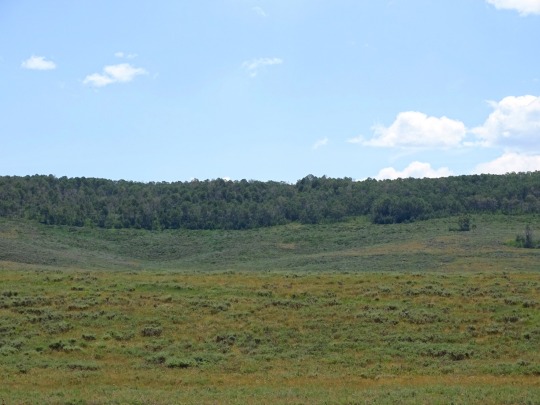
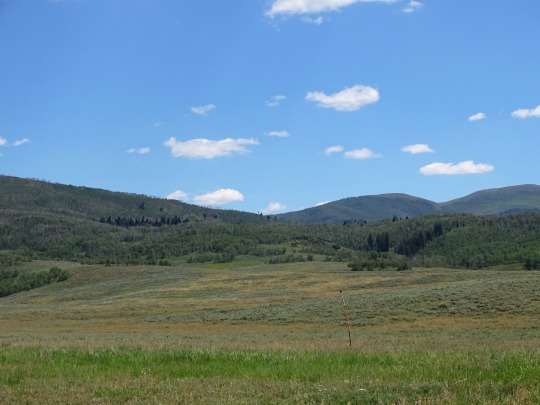




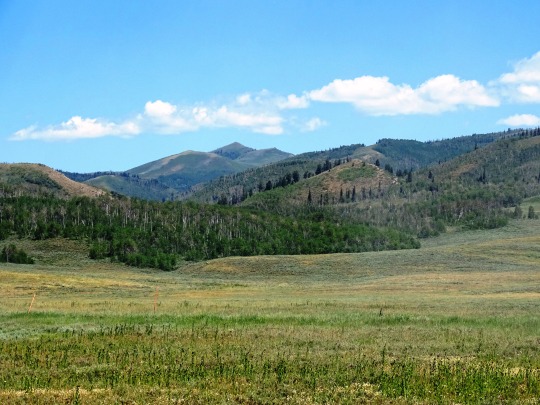

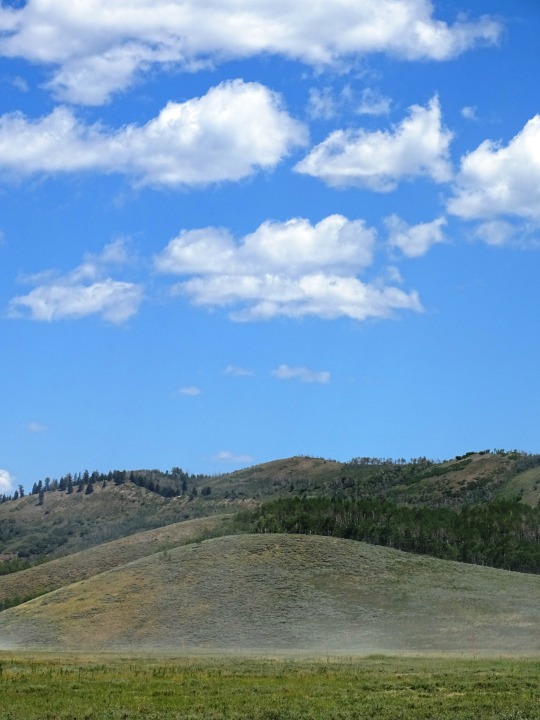
Strawberry Valley, UT (No. 2)
The Uinta Mountains are Laramide uplifted metasedimentary rocks deposited in an intracratonic basin in southwest Laurentia during the time of the breakup of the supercontinent Rodinia. The marine and fluvial metasedimentary rocks in the core of the Uinta Mountains are of Neoproterozoic age (between about 700 million and 760 million years old) and consist primarily of quartzite, slate, and shale. These rocks comprise the Uinta Mountain Group, and reach thicknesses of 13,000 to 24,000 feet (4.0 to 7.3 km). Most of the high peaks are outcrops of the Uinta Mountain Group. Many of the peaks are ringed with bands of cliffs, rising to form broad or flat tops. The mountains are bounded to the north and south by reverse faults that meet below the range, on the north by the North Flank fault and on the south by the Uinta Basin boundary fault.
The Uinta Mountain Group, from oldest to youngest, includes Uinta Mountain undivided quartz arenite, overlain by the Moosehorn Lake, Mount Watson, Hades Peak, and Red Shale formations. The flanks of the east-west trending Uinta Mountains contain a sequence of Paleozoic and Mesozoic strata ranging from the Cambrian Lodore Formation to the Cretaceous Mancos Shale, all of which have been tilted during the uplift of the mountain range.
Source: Wikipedia
#Strawberry Valley#Uinta Mountains#Wasatch National Forest#summer 2022#Uintah and Ouray Indian Reservation#Uinta National Forest#Uintah County#landscape#countryside#big sky country#Rocky Mountains#vacation#travel#original photography#Utah#Western USA#tourist attraction#meadow#flora#nature#forest#wildflower#USA
5 notes
·
View notes
Photo

Skinwalker Ranch
Some have called it a supernatural place. Others have deemed it “cursed.” Terry Sherman got so spooked by the happenings on his new cattle ranch that 18 months after moving his family of four to the property now known by many as “Skinwalker Ranch” in north-eastern Utah, he sold the 512-acre parcel away.
He and his wife Gwen shared their chilling experiences with a local reporter in June 1996: They’d seen mysterious crop circles, the Sherman's said, and UFOs, and the systematic and repeated mutilation of their cattle—in an oddly surgical and bloodless manner. Within three months of the story’s publication, Las Vegas real estate magnate and UFO enthusiast Robert Bigelow bought the property for $200,000.
The ranch was resold to Adamantium Real Estate, which has since applied to trademark the name “Skinwalker Ranch.”
According to Hunt for the Skinwalker, odd objects have been spotted overhead since the first European explorers arrived: In 1776, Franciscan missionary Silvestre Vélez de Escalante wrote about strange fireballs appearing over his campfire in El Rey. And before the Europeans, of course, indigenous peoples occupied the Uinta Basin. Today, “Skinwalker Ranch” abuts the Uintah and Ouray Indian Reservation of the Ute Tribe.
Not everything the Shermans saw on their ranch was sky-borne UFOs. They also claimed to see mysterious large animals: most notably, a wolf three times the size of a normal wolf that Terry shot at close range multiple times with a rifle—to seemingly no effect. Then, on the night of March 12, 1997—after the ranch had been sold off—biochemist Colm Kelleher, working with Bigelow’s National Institute for Discovery Science, claimed to see a large humanoid creature spying on the research team from a tree. As he detailed in Hunt for the Skinwalker, the creature was approximately 50 yards away, watching the team safely from a tree perch 20 feet off the ground. “The large creature that lay motionless, almost casually, in the tree,” said Kelleher. “The only indication of the beast’s presence was the penetrating yellow light of the unblinking eyes as they stared fixedly back into the light.”
After Kelleher fired at the creature with a rifle, it disappeared. “It was then that I saw it—a single, obvious oval track about six inches in diameter embedded deeply in the patch of snow... It looked unusual: a single large print in the snow with two sharp claws protruding from the rear of the mark going a couple of inches deeper. It almost looked like a bird of prey, maybe a raptor print, but huge and, from the depth of the print, from a very heavy creature.”
Repeated sightings of humanlike creatures have led some to invoke the name “Skinwalker,” a shape-shifting character from Navajo tribal folklore. Among the Navajo, skinwalkers are like werewolves: evil witches who can transform themselves into the creatures of their choosing.
Other strange sightings have occurred directly next door, at Bottle Hollow—a 420-acre man-made reservoir on Ute land abutting the ranch, which was filled with fresh water in 1970 by federal government mandate. In 1998, a police officer saw a large light plunge into the reservoir and then remerge, flying off into the night sky. One night in 2002, four young (non-Indian) men standing on the reservoir’s shoreline saw a blue-white ball enter the artificial lake.
According to the Hunt for the Skinwalker, the glowing ball dove into the water just a few feet from the shore, then emerged seconds later in a new form: a shimmering, manoeuvrable belt-shaped shaft of light. “After performing a brief writhing aerial dance, the belt of light zipped away at a high rate of speed, hugging the ground before disappearing below the top of Skinwalker Ridge.”
The appearance of the supernatural around Bottle Hollow makes sense with the context of Ute belief. According to Jones, amongst the Utes “springs and certain waterways were reservoirs of negative power… There were evil spirits or evil sprites that would rise up out of the water and drag you in.”
81 notes
·
View notes
Text

-------



Citing decades of conflict with the state over water, the Ute Indian Tribe is upset with a freshly passed bill that would set up a new state agency to advance Utah’s interests in the Colorado River, potentially at the expense of the tribe’s more senior rights.
On Wednesday [3 March 2021], tribal Chairman Luke Duncan sent a letter to Gov. Spencer Cox, insisting on guarantees that the newly proposed Colorado River Authority of Utah wouldn’t take steps that would diminish the tribe’s water rights. “We were a tribe long before Utah was a state and controlling law prevents Utah or its Colorado River Authority from taking any action that would impact our water rights,” the Ute Indian Tribal Business Committee said Friday in a statement. “After more than a century of broken agreements and attacks on our waters, state laws like HB297 must be clear that the state cannot diminish or impact our Indian reserved water rights. [...]
The tribe wanted HB297 amended, but on Thursday [4 March 2021] the Legislature finalized the bill, which would also establish a $9 million “legal defense fund” and advisory councils. The legislative session was poised to end Friday at midnight, so it appeared too late for any amendment. [...]
“Utah water lobbyists are continuing their climate change-denying water war against other Colorado River Basin states with this legislation,” said Zach Frankel, executive director of the Utah Rivers Council. “It’s disappointing Utah isn’t working to embrace climate change and our shared future of collaboration by denying what’s happening to the Colorado River and advancing the Lake Powell pipeline with this secretive bill.” [...]

Under a century-old compact, Utah shares the river’s flow with six other states, divided between the Colorado’s Upper Basin and Lower Basin. Utah is in the Upper Basin with New Mexico, Wyoming and Colorado, while the Lower Basin is made up of Arizona, Nevada and California. Glen Canyon Dam, which impounds Lake Powell, is where the two basins meet. [...]
According to the U.S. Bureau of Reclamation, the Utes’ claim rights to divert 550,000 acre-feet, but tribal members use 212,000. The tribe has not been able use its full right because it lacks the means to store all that water, mostly flowing off the Uinta Mountains’ south slope into the Duchesne and Green rivers passing through the Uintah and Ouray Reservation.
The state and the tribe worked out a water agreement back in the 1980s, but it has yet to be approved by the federal government. The Utes have taken the Interior Department to court over the government’s alleged mishandling of the tribe’s water rights. That case is pending in federal court in Washington, D.C.
HB297 charges the new authority with advancing water projects, such as the controversial Lake Powell pipeline, aimed at developing Utah’s access to the Colorado’s water. Because the bill would allow broad exemptions to Utah’s public records and open meetings laws, the bill’s many critics believe it would enable the new authority to pursue legal strategies in secret.
That provision raised concerns among tribal officials who say the authority “is specifically designed” to evade transparency and accountability.
“The state’s continuing attacks on the tribe’s water rights and the state’s refusal to negotiate a free and fair settlement with the tribe, has created a cloud of uncertainty and mistrust as the state looks to negotiate with other Colorado River Basin states,” the tribe stated.
-------
Headline and text published by: Brain Maffy. “What about us? Ute Tribe asks as Utah moves to protect its share of the Colorado River.” The Salt Lake Tribune. 5 March 2021. Updated 6 March 2021. (Images and captions from The Salt Lake Tribune, March 2021.)
96 notes
·
View notes
Text
Ute Indian Tribe Successfully Restores Over 40 Acres of Land at Ute Plaza to Trust Status
Ute Indian Tribe Successfully Restores Over 40 Acres of Land at Ute Plaza to Trust Status
Ute Plaza Supermarket is an anchor store on the property recently put into trust.
FT. DUCHESNE, Utah— On March 21, 2019, the Acting Superintendent, Bureau of Indian Affairs, U.S. Department of the Interior (“BIA”), issued a notice of determination to approve the fee-to-trust application to acquire real property in trust for the Ute Indian Tribe of the Uintah and Ouray Reservation (“Tribe”), Fort…
View On WordPress
12 notes
·
View notes
Photo

EPA proposes air quality plan for oil and gas emissions on the Uintah and Ouray Indian Reservation DENVER — The U.S. Environmental Protection Agency (EPA) has proposed a plan to establish federally enforceable requirements to control air pollutant emissions from new and existing oil and natural gas sources on the Uintah and Ouray Indian Reservation in northeast Utah.
0 notes
Photo

EPA proposes air quality plan for oil and gas emissions on the Uintah and Ouray Indian Reservation DENVER -- The U.S. Environmental Protection Agency (EPA) has proposed a plan to establish federally enforceable requirements to control air pollutant emissions from new and existing oil and natural gas sources on the Uintah and Ouray Indian Reservation in northeast Utah.
#Environmental Protection Agency#Michael Beebe#MichaelBeebe.net#Son of Bee’s Holdings LLC#Spark Plug Strategies#SparkPlugStrategies.com
0 notes
Text
Detox Centers In Altonah Utah 84002
Contents
Treatment rehab centers located
2 miles. 16975
Boyne city mi. tbd
Strawberry reservoir visitor center
: utah. city: altonah. zip
Detox Centers In Macon Mississippi 39341 Region VII Community Counseling Servs is located in Macon, Mississippi – Real Rehab Reviews and Professional Contact Details for Addiction Treatment Services … Featured centers … macon, Mississippi 39341 Map. 662-726-5042. Nearby Rehabs. Lake … Search our database of addiction treatment rehab centers located in Macon, .Macon rehabs and addiction treatment service providers include inpatient
Zillow has 1 homes for sale in Altonah UT. View listing photos, review sales history, and use Similar results nearby. Results within 2 miles. 16975 W 5000 N Altonah UT 84002. House For Sale. By analyzing information on thousands of single family homes for sale in Altonah, Utah and across the…
Detox Centers In Boyne City Michigan 49712 Zillow has 133 homes for sale in boyne city mi. tbd High Pines Trl Boyne City MI 49712. By analyzing information on thousands of single family homes for sale in Boyne City, Michigan and across the United States, we calculate home values (Zestimates) and the Zillow Home Value Price… Rehab Services » Outpatient Rehab Centers
ECONOMY. The unemployment rate in Altonah (zip 84002) is 10.0% (U.S. avg. is 5.2%). Recent job growth is Negative. Altonah (zip 84002) public schools spend $8,566 per student. The average school expenditure in the U.S. is $12,383. There are about 21.5 students per teacher in Altonah (zip…
Detox centers provide a range of effective detoxification services to help transition from drug addiction to sobriety. Drug and alcohol detox programs provide a safe place for addicts to eliminate drugs or alcohol from the body under supervised medical care.
Altonah Florist Concierge in Florists. Rocky Mountain Crane Service in Specialty Contractors. 16500 N 4500 W Altonah, Utah 84002 | (435) 454-3759.
Altonah, Utah. Wikipedia Open wikipedia design. 84002. GNIS feature ID. 1425097[1]. Altonah (also Altona) is an unincorporated community in central Duchesne County, Utah, United States.[1].
And while yes many detox centers do offer services that can help with the withdrawal process from numerous drugs or alcohol, it is important to ensure that the detox center you will be attending has the knowledge to help you overcome your particular addiction.

Find HOTELS in 84002 Altonah. Search by zip code for hotels near Altonah Utah. Deals + discounts on lodging and motels in Duchesne county and area code When you stay at Daniels Summit Lodge in Heber City, you'll be in the mountains and within the vicinity of strawberry reservoir visitor center.
Altonah homes for sale range from $240K – $550K with the avg price of a 2-bed single family home of $—. Altonah UT real estate listings updated every 15min. As a licensed brokerage in Utah (and across the United States), Movoto has access to the latest real estate data including single family…
Altonah, Utah on WN Network delivers the latest Videos and Editable pages for News & Events, including Entertainment, Music, Sports, Science and more, Sign up and share your playlists. Altonah (also Altona) is an unincorporated community in central Duchesne County, Utah, United States, and…
Detox Centers In Natalia Texas 78059 Belo Horizonte | Brazil. Nazareth, Ethiopia; Parnamirim, Brazil; Belo Horizonte, Brazil; Belo Horizonte | Brazil Detox Centers In West Concord Minnesota 55985 Публикуван със специалното разрешение на авторката и по молба на Vostroto – от сборника: GeA, First Person Tales, West Concord, MN (55985) Hourly Weather. 1:22 pm CST. Rain possible at 7: 00pm. ….
Altonah (also Altona) is an unincorporated community in central Duchesne County, Utah, United States. The community is located on the Uintah and Ouray Indian Reservation along local roads north of State Route 87, north of the city of Duchesne, the county seat of Duchesne County.
Почтовый Индекс 84002. Altonah | Соединённые Штаты Америки. Altonah (also Altona) is an unincorporated community in central Duchesne County, Utah, United States, and on the Uintah and Ouray Indian Reservation. Деловые данные для 84002. Предприятия в 84002 – Altonah.
მთავარი » Utah » Duchesne » Altonah » 84002. Altonah, Duchesne, Utah მდებარეობს შეერთებული შტატები. მისი საფოსტო კოდი 84002.
Classifieds in Altonah, Utah at CannonAds.com across Utah. A wide variety of ads Buy, rent, sell and find anything – 0 in one convenient place. Classifieds in Altonah, Utah. Only Local Ads Near You! Classifieds in: utah. city: altonah. zip code: 84002.
Search all the latest Altonah, UT foreclosures available. Foreclosure Homes in Altonah, UT 1 Results. It is situated at the southern base of the Uinta Mountains and has an elevation of 6,673 feet (2,034 m). Although Altonah is unincorporated, it has a post office, with the ZIP code of 84002.
Altonah (also Altona ) is an unincorporated community in central Duchesne County, Utah, United States, and on the Uintah and Ouray Indian Reservation. All information for Altonah, Utah's wiki comes from the below links. Any source is valid, including Twitter, Facebook, Instagram, and LinkedIn.
Unincorporated community in Utah, United States Altonah, Utah Unincorporated community Altonah Location within the state of Utah Coordinates: 40°24� ‡This populated place also has portions in an adjacent county or counties. This article about a location in Utah is a stub. You can help Wikipedia by…
Points of interest for Altonah, UT 84002 – Duchesne County Utah – restraurants, schools, banks, hotels, churches and other points of interest.
2 Homes For Sale in Altonah, UT 84002. Browse photos, see new properties, get open house info, and research neighborhoods on Trulia. For those looking for a strong community feeling ZIP code 84002 is home to a large number of owner occupied properties, showing that many have made their home…
Detox Centers In Rydal Georgia 30171 The median home cost in Rydal (zip 30171) is $171,800. Home appreciation the last 10 years has been 12.92%. Check out the homes in the area or Find top agents in Rydal (zip 30171) SCHOOLS Rydal (zip 30171) public schools spend $11,760 per student. The average school expenditure in the U.S. is $12,383. Aug 18,
Find local offers from businesses in Altonah, Utah. Get customer reviews and write your own feedback about any company. Ashley National Forest, FR119, Altonah, UT 84002, USA.
Detox Centers In Hancock New York 13783 Stop letting drug and alcohol addiction ruin your life, and get help from our top rated Scranton treatment centers today. All major insurance accepted Caring and Holistic Treatment for Drugs and Alcohol around Scranton Rehab Services » inpatient rehab centers » NY » Drug Addiction Help in Hancock 13783 Inpatient Rehab Centers in Hancock, NY
0 notes
Photo

Delegation of Colorado Ute Indians together with white escorts in Washington D. C. who formulated the Kit Carson Treaty of 1868
Image of a oval portrait of Kit Carson and a triptych of standing portraits of the delegation of representatives from the Tabeguache, Moache, Capote, Weeminuche, Yampa, Grand River, and Uintah bands of Native American Utes and white delegates in Washington D. C. to sign the Kit Carson Treaty, providing a single reservation of all Ute bands with agencies at Los Pinos and Grand River, Colorado. First group portrait includes "Ank-o-tash, Pe-a-ach, Su-ru-ipe, G. M. Curtis, interpreter;" second group: "Geo. M. Chilcott, Colorado Delegate Congress, Sa-wa-ich, Albert G. Boone, grandson Dan'l Boone, A. C. Hunt, Gov. Colorado, Capt. Jack, Nic-a-a-gat, Hiram P. Bennet, 1st Delegate to Congress Colorado; third group: "Lafayette Head, Ind. Agt., Daniel C. Oaks, Ind. Agt., Waro, Ouray, Edward Kellogg, Capote."
4 notes
·
View notes
Photo
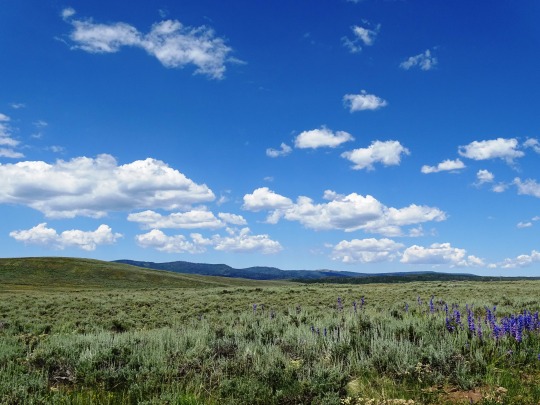

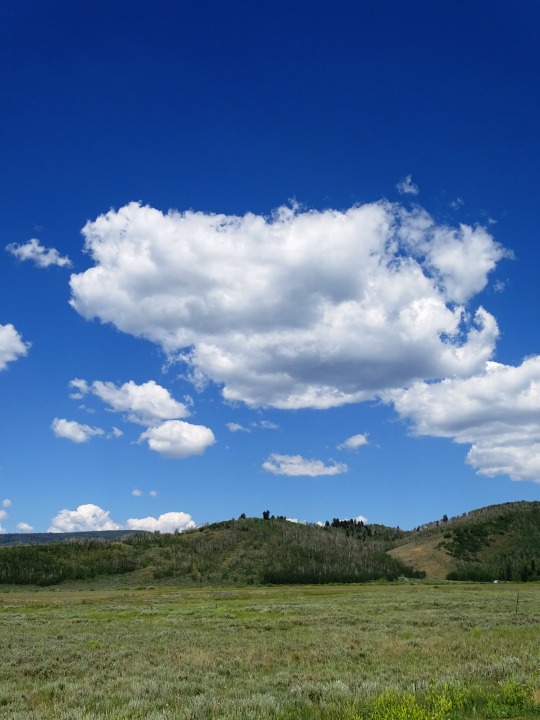
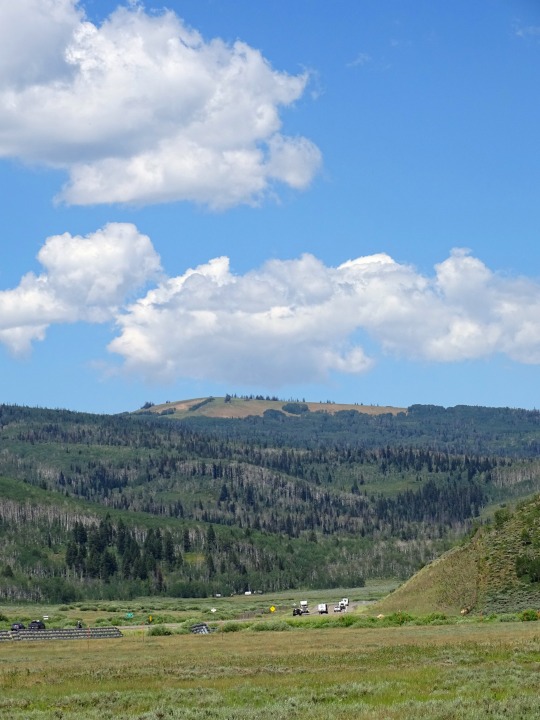
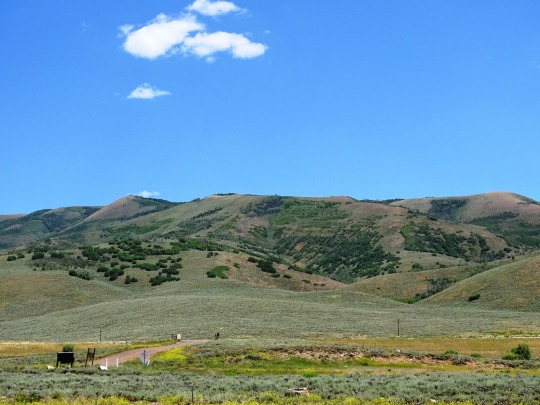
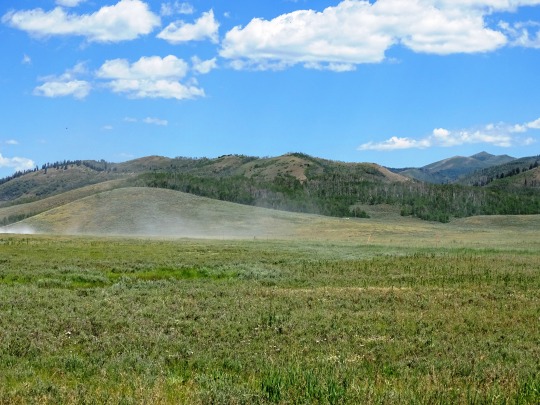
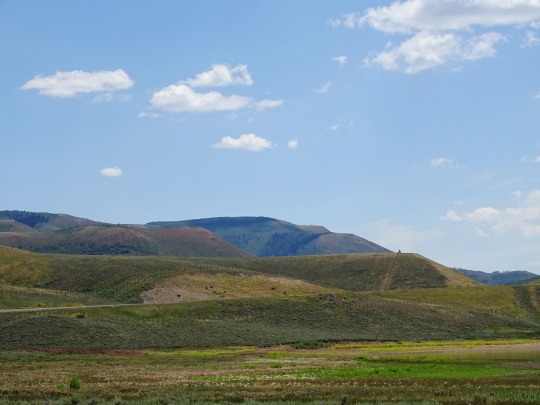
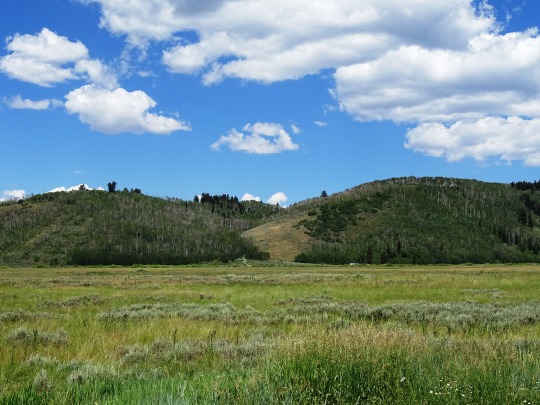
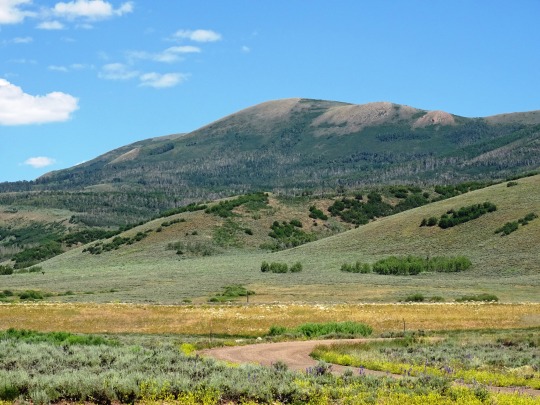
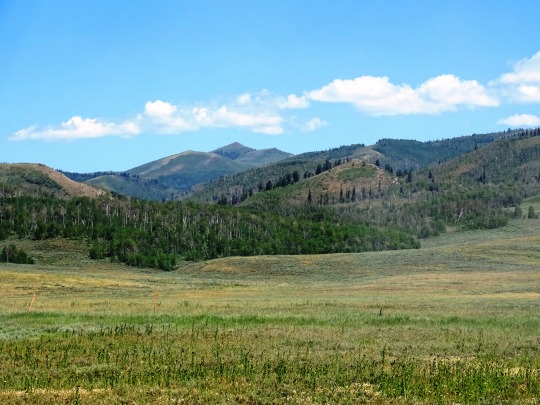
Strawberry Valley, UT (No. 5)
Strawberry Reservoir was poisoned (chemically treated) in 1990 to kill all aquatic life in the lake in attempt to get rid of trash fish, specifically the Utah chub. Shortly after replanting the fish, Utah Chub began to appear. The DWR (Division of Wildlife Resources) found that the Bonneville Cutthroat trout (Bear Lake Strain) was a very aggressive chub-eating fish. The DWR has used the Cutthroat trout to keep the number of Chub down in the lake. The fishing and angling regulations for Strawberry are very strict regarding the possession, release and quantity of Native Cutthroat an angler is allowed to keep.
As of 2008 all Cutthroat between 15 inches (380 mm) to 22 inches (560 mm) in length are required to be released back into the water, regardless of the health of the fish. However, anglers are continually encouraged to voluntarily release all cutthroat trout, regardless of size. Additionally, the 2021 DWR regulations for the waterbody indicate that "Any trout with cutthroat characteristics (not necessarily jaw slashing) is considered to be a cutthroat trout."
Clearing of the banks of the reservoir's major tributary, the Strawberry River, over the course of the 20th century for grazing purposes has caused naturally occurring phosphorus to become washed into the river and deposited in levels unhealthy to wildlife in the reservoir. An extensive restoration program to re-plant grasses and trees along the banks of the entire river was expected to be completed in 2010. However, the project did not reach completion until 2019. The USFS will continue to monitor the area for weeds and weed treatments will continue, as needed. To improve sage grouse nesting and brood-rearing habitats, these areas will be accessed and treatments will be proposed where appropriate. Grazing will still be allowed where it is currently in place.
Source: Wikipedia
#Strawberry Valley#Uinta Mountains#Uintah County#Uinta National Forest#Uintah and Ouray Indian Reservation#Rocky Mountains#landscape#countryside#original photography#flora#wildflower#Utah#tourist attraction#landmark#meadow#summer 2022#Western USA#nature#big sky country#blue sky#clouds#woods#tree
2 notes
·
View notes
Link
Reports persist of UFOs, crop circles, cattle mutilation—and shapeshifting creatures impervious to bullets.
Some have called it a supernatural place. Others have deemed it “cursed.” Terry Sherman got so spooked by the happenings on his new cattle ranch that 18 months after moving his family of four to the property now known by many as “Skinwalker Ranch” in southeastern Utah, he sold the 512-acre parcel away.
He and his wife Gwen shared their chilling experiences with a local reporter in June 1996: They’d seen mysterious crop circles, the Shermans said, and UFOs, and the systematic and repeated mutilation of their cattle—in an oddly surgical and bloodless manner. Within three months of the story’s publication, Las Vegas real estate magnate and UFO enthusiast Robert Bigelow bought the property for $200,000.
Under the name the National Institute for Discovery Science, Bigelow set up round-the-clock surveillance of the ranch, hoping to get to the bottom of the paranormal claims. But while that surveillance yielded a book, Hunt for the Skinwalker: Science Confronts the Unexplained at a Remote Ranch in Utah, in which several of the researchers claimed to have seen paranormal activities, they were unable to capture any meaningful physical evidence supporting the Shermans’ incredible stories.
The ranch was resold to Adamantium Real Estate, which has since applied to trademark the name “Skinwalker Ranch.”
Had the Shermans been lying about what they saw? Or under the spell of a collective delusion? Without evidence, the stories they told are difficult to believe, but they’re hardly unique. The Uinta Basin of southeastern Utah has been such a hotbed of paranormal sightings over the years that some extraterrestrial enthusiasts have deemed it “UFO Alley.” “You can’t throw a rock in Southern Utah without hitting somebody who’s been abducted,” local filmmaker Trent Harris told the Deseret News.
Indeed, according to Hunt for the Skinwalker, odd objects have been spotted overhead since the first European explorers arrived: In 1776, Franciscan missionary Silvestre Vélez de Escalante wrote about strange fireballs appearing over his campfire in El Rey. And before the Europeans, of course, indigenous peoples occupied the Uinta Basin. Today, “Skinwalker Ranch” abuts the Uintah and Ouray Indian Reservation of the Ute Tribe.
Were the Shermans seeing things that nearby Native Americans had taken note of centuries before?
READ MORE: History's Most Infamous UFO Sightings
Mysterious creatures
A fence that surrounds the main buildings on Skinwalker Ranch.
Not everything the Shermans saw on their ranch was sky-borne UFOs. They also claimed to see mysterious large animals: most notably, a wolf three times the size of a normal wolf that Terry shot at close range multiple times with a rifle—to seemingly no effect.
Then, on the night of March 12, 1997—after the ranch had been sold off—biochemist Colm Kelleher, working with Bigelow’s National Institute for Discovery Science, claimed to see a large humanoid creature spying on the research team from a tree.
As he detailed in Hunt for the Skinwalker, the creature was approximately 50 yards away, watching the team safely from a tree perch 20 feet off the ground.
“The large creature that lay motionless, almost casually, in the tree,” said Kelleher. “The only indication of the beast’s presence was the penetrating yellow light of the unblinking eyes as they stared fixedly back into the light.”
After Kelleher fired at the creature with a rifle, it disappeared. “It was then that I saw it—a single, obvious oval track about six inches in diameter embedded deeply in the patch of snow... It looked unusual: a single large print in the snow with two sharp claws protruding from the rear of the mark going a couple of inches deeper. It almost looked like a bird of prey, maybe a raptor print, but huge and, from the depth of the print, from a very heavy creature.”
READ MORE: Interactive Map: UFO Sightings Taken Seriously by the U.S. Government
The ‘Skinwalker’ in Skinwalker Ranch
A view of one of the old homesteads from the top of the mesa on Skinwalker Ranch.
Repeated sightings of humanlike creatures have led some to invoke the name “Skinwalker,” a shape-shifting character from Navajo tribal folklore. Among the Navajo, skinwalkers are like werewolves: evil witches who can transform themselves into the creatures of their choosing.
But Sherman’s family ranch was 400 miles north of Navajo Nation. It was next to Ute territory. And when the Utes and the Navajo did cross paths, it was an acrimonious relationship, explains historian Sondra Jones, author of Being and Becoming Ute.
“It was not friendly,” Jones says. “The Navajo were more aggressive people; they took slaves, they had Ute slaves. And there was direct conflict when the Navajo attempted to move up into Ute territory,” at modern-day Pagosa Springs and Durango.
Cursed water, cursed lights
A small river runs through the property on Skinwalker Ranch.
While skinwalkers don’t feature in Ute religion, there are still aspects of the ranch that make sense within the context of Ute lore.
Other strange sightings have occurred directly next door, at Bottle Hollow—a 420-acre man-made reservoir on Ute land abutting the ranch, which was filled with fresh water in 1970 by federal government mandate. In 1998, a police officer saw a large light plunge into the reservoir and then reemerge, flying off into the night sky. One night in 2002, four young (non-Indian) men standing on the reservoir’s shoreline saw a blue-white ball enter the artificial lake.
According to the Hunt for the Skinwalker, the glowing ball dove into the water just a few feet from the shore, then emerged seconds later in a new form: a shimmering, maneuverable belt-shaped shaft of light. “After performing a brief writhing aerial dance, the belt of light zipped away at a high rate of speed, hugging the ground before disappearing below the top of Skinwalker Ridge.”
The appearance of the supernatural around Bottle Hollow makes sense with the context of Ute belief. According to Jones, amongst the Utes “springs and certain waterways were reservoirs of negative power… There were evil spirits or evil sprites that would rise up out of the water and drag you in.”
Don't miss the return of Project Blue Book, Tuesday January 21 at 10/9c on HISTORY.
from Stories - HISTORY https://ift.tt/30tp0EC January 17, 2020 at 10:01PM
0 notes
Text
Ute Indian Tribe Protects Reservation Lands & Waters in Sweeping Federal Public Lands Billy Passed by Congress
Ute Indian Tribe Protects Reservation Lands & Waters in Sweeping Federal Public Lands Billy Passed by Congress
Published March 3, 2019
DUSHESNE, Utah — Over the past year, the Ute Indian Tribe worked successfully to protect its Uintah and Ouray Reservation lands and waters from illegal land grabs and attacks by the State of Utah’s School and Institutional Trust Lands Administration (SITLA), Congressman Bishop, Congressman Curtis and former Senator Hatch. The Tribe’s 4.5 million-acre Reservation in…
View On WordPress
2 notes
·
View notes
Text
Incredible Lakes in Utah: That Every Camper Love To Visit
When summers are at peak it’s pretty hot in Utah, the citizens and travelers in Utah head for the nearest water bodies to cool off. The booming waters of the Great Salt Lake draw swimmers and sunbathers, particularly in the State Park of Antelope Island.
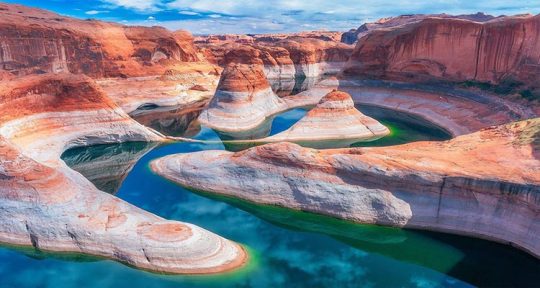
But, have you ever visited the mesmerizing lakes of Utah? If, not then you should visit these lakes to take a dip and cool off. Utah is mostly known for its spontaneous outdoor recreation. Orbisflier has scouted out all the best places to dive and enjoy the summers. In facts, Utah having 32 Lakes and with deepest lake in utah - Lake Powell (560 feets)
See The Mesmerizing Lakes in Utah
Great Salt Lake -
Lake Powell -
Bear Lake -
Deer Creek Reservoir -
Strawberry Reservoir -
Tony Grove -
Some of the more fascinating ones you’ll find:
Great Salt Lake
: - The largest water body in Utah spread across 440,000 hectare is
salt water lake
in Western hemisphere. Known as the America Dead Sea the lake is harbor for birdwatchers, as its sanctuary to millions of native birds, shorebirds and waterfowl.
Travelers can do activities like kayaking, sailing, camping, and picnic.
Lake Powell: - The reservoir sits in the Colorado River with sharing neighbor Arizona; however the majority of it lies in Utah.
The area of Glen Canyon National Recreation is 3,000km long and takes up the most of the lake’s shoreline. It is home to some of the famous landmarks, like the Rainbow Bridge National Monument and Hite crossing Bridge.
You can do fishing or camping as it has no restrictions.
Bear Lake: - The freshwater lake sits on Utah-Idaho border is 250,000 years old and its unique turquoise –blue color makes it one of the untouched lake in Utah.
Bear lake is spread across 28,000 hectare in elevation of 1,800 meters is often called ‘Caribbean Rockies’ because of the magnificent color and beautiful scenery.
For recreational activities you can enjoy swimming, boating and camping.
Deer Creek Reservoir
: - The 1,200-hectare reservoir is the Deer Creek State Park's main feature. There are 75 campsites, two boat ramps and several picnic areas in the reserve.
Deer Creek Reservoir was built with the Deer Creek Dam construction in 1971. It stands at an elevation of more than 1,600 meters and features a Mount Timpanogos backdrop. It is also easy to go zip-lining, mountain biking, and camping as well as water-based sports.
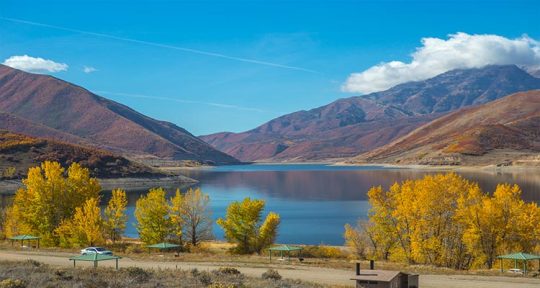
There is even a stunning local golf course (Wasatch Mountain Golf Course).
Strawberry Reservoir: - The most famous fishery in Utah, the Strawberry Reservoir gets more than 1.5 hours of fishing every year! It is host to an array of bear lake cutthroat trout, rainbow trout, salmon kokanee, and crayfish.
The lake is situated in the Strawberry River, the section of the Indian Reservation of Uintah and Ouray.
The land is the smallest of three populated by Ute Tribe members. On the west shore of the lake there is a marina that provides various sports, including boating and snowmobiling.
It is also home to a cabin and a hotel with guest rooms.
Tony Grove: - Tony Grove Lake is a scenic lake in the Scenic Byway Logan Canyon and the Wilderness area of Mount Naomi. It stands at 2,453 meters above sea level and can be accessed by a paved road. It is a glacial lake in the spring and summer, accompanied by some beautiful wildflowers.
The reservoir is also lined by a variety of trails. Overlooking the lake lies the Tony Grove Campground. Camping, canoeing, horseback riding, fishing and biking can be done here.
You may Link it | Place that Only Locals Know in Boston
Throughout Utah, there's so much geographical richness that you can comfortably spend weeks visiting the region. There are dunes of desert sand, valleys, pine forests, mountains, and many lakes. It is host to a variety of natural scenery and promises wonderful recreational activities throughout the year.
Like us on Facebook or follow us on Twitter and Instagram for Latest Air Travel Deals Download Orbisfliers Apps Now
#lakes in utah for boading#lakes in utah foe swimming#lakes in utah for camping#biggest lakes in utah#how many lake are in utah#map of utah#great salt lake utah#utah state park
0 notes
Text
Government files invitation briefs, recommends just one grant
In the past few days, the federal government has filed a bevy of briefs expressing the views of the United States on issues ranging from the interpretation of the Foreign Sovereign Immunities Act to California’s ban on foie gras. The justices often pay close attention to the government’s recommendations; if they follow that practice here, they are not likely to add many new cases from this batch to their docket, because the government recommended that the Supreme Court grant review in just one case, involving the sweep of federal immigration law.
In Kansas v. Garcia, the state asked the justices to review a decision by the Kansas Supreme Court that reversed Ramiro Garcia’s conviction for identity theft after he used someone else’s Social Security number. The Kansas Supreme Court ruled that the state’s prosecution was superseded by the Immigration Reform and Control Act, a federal law that bars employers from knowingly employing undocumented immigrants.
The Supreme Court called for the government’s views in April, and yesterday the solicitor general filed a brief agreeing with Kansas that the court should take up the case. The federal law at issue prevents states from using information on or attached to a Form I-9, the form used to verify eligibility to work in the United States, in a criminal prosecution, the government told the justices, but it does not prohibit states from prosecuting someone using “information drawn from documents other than the I-9.” Even if there is no clear conflict between the Kansas Supreme Court’s decision and those of other federal courts of appeals and state supreme courts, the government explained, the Kansas Supreme Court’s ruling “is nevertheless an outlier” because it is so “expansive.” The government urged the justices not to take up a broad second question presented in the state’s petition involving the state’s police powers, but it suggested that the justices also consider whether, even if Congress did not say so specifically, Kansas’ prosecution of Garcia is nonetheless pre-empted, under a doctrine known as implied pre-emption.
The solicitor general urged the justices to sit out a trio of cases challenging state laws that seek to regulate the treatment of farm animals. Two of those are original actions – that is, lawsuits filed first in the Supreme Court. In Missouri v. California, Missouri has asked the court to strike down a California law that requires farms raising egg-laying hens to ensure that the hens can move around freely. Telling the court that California’s regulation of eggs has “inflated egg prices for every egg consumer in the Nation,” 13 states argue that the law is trumped by federal laws and violates the Constitution’s commerce clause, which prohibits states from enacting laws that are intended to discriminate against citizens of other states or that place an unnecessary burden on interstate commerce. And in Indiana v. Massachusetts, another group of states (which closely resembles, but is not identical to, the group of state plaintiffs in the Missouri case) contests a ban in Massachusetts on the sale of eggs, pork and veal from animals that were “confined in a cruel manner.”
In the third case, Association des Éleveurs de Canard et d’Oies du Québec v. Becerra, the justices have been asked to intervene in a challenge by a group of Canadian duck and goose farmers to California’s ban on foie gras (which the farmers describe as “perhaps the most maligned (and misunderstood) food in the world”). The farmers argue that the ban is superseded by federal laws governing the sale of poultry products in the United States; California’s attorney general counters that the state’s law is intended to prevent animal cruelty – a subject not addressed by the federal laws at issue.
The federal government urged the justices to stay out of all three cases. It argued that Missouri v. California and Indiana v. Massachusetts were not suitable cases for the court to exercise its original jurisdiction, “which the Court has repeatedly stated should be exercised only sparingly.” And it told the justices that the California law on foie gras was not trumped by federal agricultural laws; moreover, the lower court’s decision did not conflict with any ruling by either the Supreme Court or the federal courts of appeals.
The False Claims Act allows both the government and private individuals to bring lawsuits (to recover up to three times the damages incurred by the government) alleging fraud in government contracting. If the lawsuit is successful, a private party can receive part of the funds recovered by the government. In Gilead Sciences Inc. v. United States ex rel. Campie, the justices have been asked to decide whether an FCA lawsuit can go forward when the government continues to pay for a product – here, drugs used to treat HIV – even after it learns about allegations that manufacturers had made false statements to the Food and Drug Administration about where it would produce the active ingredients in the drugs.
The justices asked the solicitor general for his views in April, and last week the solicitor general recommended that review be denied. He suggested that there is no real disagreement among the courts of appeals on the issue presented in the case because all of them would approach the question “holistically,” looking at the specific facts of each case. But in any event, the solicitor general continued, this case would not be a good candidate to consider the question presented, because there is a dispute about “exactly what the government knew and when.”
City of Cibolo v. Green Valley Special Utility District arises from a dispute over efforts to provide sewer services in an area between Austin and San Antonio. In 2003, the utility district received a federal loan to fund its water service; it has certificates giving it the exclusive rights under state law to provide water and sewer services. Under federal law, when a rural utility receives such a loan, it is protected against competition for the “service provided or made available through” the utility while the loan is outstanding.
The questions presented in the case are whether the law applies only to the service funded by the loan – here, water but not sewer – and whether a duty to provide the service is enough to establish that the service has been provided. The U.S. Court of Appeals for the 5th Circuit ruled for the utility, and the city (which also seeks to provide the services) asked the Supreme Court to weigh in.
The solicitor general agreed with the city that the 5th Circuit’s ruling is “incorrect,” but he nonetheless urged the Supreme Court to deny review, telling the justices that the case could soon be moot because the utility has applied for a loan for its sewer system. The justices should not review the second question presented in the city’s petition, the solicitor general added, because the city did not raise it in the lower court.
de Csepel v. Republic of Hungary is yet another chapter in the battles over art seized by the Nazis and their allies during World War II. The art collection at the heart of this case was confiscated from the family of Baron Mor Lipot Herzog, who filed a lawsuit against Hungary and its museums in federal district court in Washington, D.C., to try to recover the art, arguing that the art had been taken in violation of international law.
Hungary countered that it cannot be sued in U.S. courts because a federal law, the Foreign Sovereign Immunities Act, gives it immunity. The FSIA contains an exception that would allow lawsuits when “rights in property taken in violation of international law are in issue”; the question that the court has been asked to review is whether the exception applies to the family’s case. After the U.S. Court of Appeals for the District of Columbia Circuit ruled that it did not, the family went to the Supreme Court, which asked the federal government to weigh in.
The federal government concluded that the Supreme Court should deny review. It made clear that it “deplores the acts of oppression committed against the family,” but it argued that the D.C. Circuit’s “decision is correct”: The museums that have the artwork could be sued in the United States because they sell books here, but those commercial activities don’t provide a basis to sue Hungary in U.S. courts. “The expropriation exception,” the government explained, “permits courts to exercise jurisdiction over a foreign state for expropriating property only when the property is in the United States in connection with the foreign state’s own commercial activities in the United States.”
In Osage Wind v. Osage Minerals Council, the justices have been asked to take up a dispute arising from the development of a wind-energy project on land in Oklahoma established as a reservation for the Osage Nation. There are two questions at issue in the case: whether the minerals council could appeal a decision against the United States in a lawsuit that the government had filed; and whether Osage Wind engaged in “mining” – for which it needed a mineral lease – when it removed soil, sand and rock to build cement foundations for wind turbines. The U.S. Court of Appeals for the 10th Circuit answered both questions in the affirmative, prompting Osage Wind to seek Supreme Court review.
The solicitor general urged the justices to deny review, telling them that although only parties to a case may normally appeal a judgment against them, there is a “narrow exception” to that rule that the minerals council satisfies. And the “interpretation of the word ‘mining’ in [the Department of the] Interior’s regulations governing mineral leases on Indian lands” also does not warrant Supreme Court review, the government wrote.
Harvey v. Ute Indian Tribe of the Uintah and Ouray Reservation has its roots in a business dispute between a Utah man, Ryan Harvey, and the tribe. The Utah Supreme Court ruled that Harvey should have gone to tribal courts first, and it ordered the state district court to either dismiss the case or put it on hold until tribal courts have weighed in. Harvey went to the Supreme Court, which called for the views of the solicitor general. The solicitor general told the justices not to grant review; he acknowledged that “state supreme courts have taken somewhat different approaches in cases involving claims that implicate tribal jurisdiction,” but he added that those “decisions have largely rested on multiple case-specific factors, and no clear-cut conflict exists.”
This post was originally published at Howe on the Court.
[Disclosure: Goldstein & Russell, P.C., whose attorneys contribute to this blog in various capacities, is among the counsel to the petitioners in de Csepel and Osage Wind. However, the author of this post is not affiliated with the firm.]
The post Government files invitation briefs, recommends just one grant appeared first on SCOTUSblog.
from Law http://www.scotusblog.com/2018/12/government-files-invitation-briefs-recommends-just-one-grant/ via http://www.rssmix.com/
0 notes